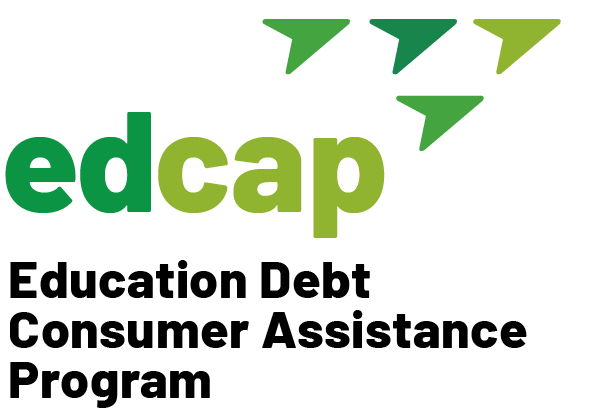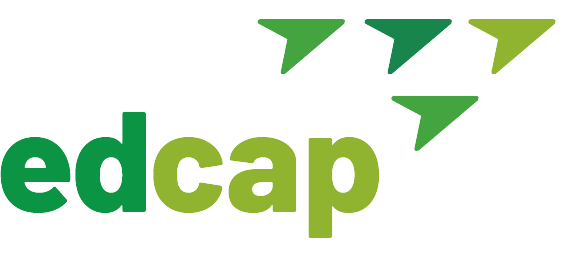Qualifying for the Public Service Loan Forgiveness (PSLF)
PSLF forgives the balance of your federal student loans after you make 120 “qualifying monthly payments” (10 years). Forgiven balances are not subject to income tax.
To earn credit and qualify for forgiveness under PSLF, make sure you meet these requirements:
- Your loans are “Direct”.
- Make payments under an Income-Driven-Repayment (IDR) plan (SAVE, PAYE, IBR, or ICR) on time and in full.
- Make payments while working full-time or an average of 30 hours per week for a qualifying employer.
Qualifying Employers
A qualifying employer includes government agencies at any level (Federal, State, Local, Tribal), 501(c)(3) non-profit organizations, other types of not-for-profit companies that mainly provide public services (such as healthcare, education, legal assistance, etc.) or serving as a full time volunteer for Americorps or the Peace Corps.
Click here to see if your employer qualifies.
Note: The 120 payments are cumulative. They do not have to be made consecutively. Only payments made after October 1, 2007 will qualify because that is when the program started.
Steps to Obtain Public Service Loan Forgiveness
1. Make Sure You Have “Direct Loans”
Only loans under the Direct Loan program qualify. If you still have FFEL/Perkins, you would need to consolidate them via studentaid.gov to make them eligible. Get help to understand the impact of consolidation.
You can check which loans you have by going to studentaid.gov. Click on “My Aid” and scroll down to “Loan Types”. If all your loans say “Direct”, they are eligible. If you have FFEL, Perkins, or HEAL, you would need to consolidate them. Get advice before doing so.
Note: If you have Direct Parent Plus loans, you may need to consolidate them in order to access the only IDR plan available to Parent Plus borrowers, the ICR. Get help if needed.
2. Verify Your Employer Eligibility
To ensure your employment qualifies for PSLF, use the PSLF Employer Search Tool. This tool allows you to check if your past, current, or prospective employers meet the program’s requirements.
How to Use the PSLF Employer Search Tool:
- Enter the Employer Identification Number (EIN) from your W-2 form (or ask your HR department).
- Enter employment dates.
- Hit “search” and it will tell you whether your employer is eligible or not.
3. Make Qualifying Payments
To qualify for PSLF, you need to make 120 qualifying monthly payments. These payments must be:
- Made under an Income-Driven Repayment (IDR) plan. Confirm you are enrolled in one of these plans: SAVE, PAYE, IBR or ICR. If not, enroll via studentaid.gov/idr. Note that some payments in the Standard 10-Year fixed plan will count, but eventually, you must switch to an IDR plan.
- Made on Direct Loans (including Direct Consolidation Loans).
- Made while working full-time (or an average of 30 hours or more per week) for a qualifying employer.
ALERT: Please be advised that the SAVE IDR plan is temporarily blocked by a court order. Learn more.
4. Certify Your Employment Annually
It’s crucial to regularly certify your employment to ensure you’re on track for PSLF. The PSLF Help Tool assists you in completing and submitting the Employment Certification Form (ECF).
How to Use the PSLF Help Tool:
- You will need your (1) Employer’s Identification Number (EIN) which you can find on your W-2 form; (2) exact employment start and end dates, if applicable; (3) the contact information (name and email) of the person signing off and verifying your employment, which is usually someone in HR.
- We recommend requesting electronic signatures from your employers via the PSLF Help Tool to avoid issues and expediate review.
- Submit the ECF annually or whenever you change employers.
Tip: To receive an updated payment count for PSLF, you must submit a new ECF even if you remain with the same employer. Payments will be certified based on the employer’s signature date, so it’s recommended to file an ECF annually. For past employers, you only need to certify your employment once.
Caution: You must be employed at the time you submit your final ECF. Do not leave your qualifying employment until you’ve confirmed that you’ve met all the payment requirements and have submitted your final form.
5. Track Your Progress
Maintain records of your qualifying payments and employment certification. Regularly check your studentaid.gov account and your loan servicer’s account statements to ensure your payments are accurately tracked.
Watch this short video to see how you can track your progress at studentaid.gov.
PSLF Buy Back Program
You may be able to buy back months that don’t qualify for PSLF due to ineligible deferment or forbearance. However, this option is available only if:
- You still owe on your loan(s).
- You have 120 months of approved qualifying employment.
- Buying back these months would complete the 120 qualifying payments needed for forgiveness under PSLF or Temporary Expanded PSLF (TEPSLF).
Learn more about PSLF Buy Back.
Important Tip: Wait until your payment count is updated before submitting a buyback request.
PSLF FAQs
I filed the PSLF/TEPSLF Certification & Application Form, what now?
- It will be reviewed. Processing times may vary. But if you don’t get a status update within 6 weeks, reach out to your servicer to ensure it is being processed.
- Once your PSLF/TEPSLF Certification & Application Form is reviewed, you will get a notice letting you know the number of qualifying payments you have and the number you will need to accumulate to have your balance forgiven under PSLF.
- If you feel you got a final determination and don’t agree with the outcome, you can file a request for reconsideration with Federal Student Aid or file a complaint with your servicer. Don’t give up, reach out to EDCAP if you need help filing a complaint.
Tip: Submit the PSLF/TEPSLF Certification & Application Form every year and when you change jobs to make sure your payments are being counted.
How do I know if my loans are Direct loans?
- Your loans will say so. It will say “Direct….” If you took out loans after July 1, 2010, chances are they are Direct loans.
- If you took out loans prior to July 1, 2010, they may be what are known as FFEL loans. You may also have Perkins loans. To qualify for PSLF, you would need to consolidate non-direct loans into a new direct loan.
- To confirm your loan types, go to your studentaid.gov account. Go to “My Aid” and scroll down to “Loan Types.” For every loan with a balance, confirm it has the word “Direct.” It can be a Direct consolidated loan. If it says FFEL, Perkins, or HEAL, you will need to consolidate but get advice before doing so.
Is there one specific Income Driven Repayment plan I must enroll in?
- There are four Income Driven Repayment plans: Saving on a Valuable Education (SAVE), Pay As You Earn (PAYE)*, Income-Based Repayment Plan (IBR) and Income-Contingent Repayment (ICR).
- Your specific loans will determine which IDR plans you qualify for. As long as you enroll in one of these plan(s), you will meet this requirement.
What is the difference between PSLF and TEPSLF?
- PSLF is the standard program that most borrowers will use to qualify for forgiveness. The Temporary Expanded PSLF program was created to expand eligibility for those who initially made payments under non-qualifying repayment plans but still meet the other PSLF requirements.
- TEPSLF funding is limited and to ensure you qualify under the original PSLF program, make sure you are making payments under an Income Driven Repayment Plan.
Why isn’t my payment count updating even though I still work for the same employer?
- Your payment count may not update if you haven’t submitted a new Employment Certification Form (ECF). Even if you remain with the same employer, the payment count is only updated when you submit a new ECF, as payments are certified based on the employer’s signature date.
- Regularly submitting an ECF, preferably annually, ensures your payment count is accurately tracked.
What should I do if I have loans with different qualifying payment counts?
- If your federal loans have different qualifying payment counts due to varying repayment histories, consider consolidating them to align the payment counts and get all your loans forgiven at the same time.
- When you consolidate, qualifying payments made on your Direct Loans will be credited to the new consolidation loan based on a weighted average of those payments. Before consolidating, it’s strongly recommended that you certify all qualifying employment applicable to the loans to ensure the weighted average is correctly applied.
- Don’t hesitate to get help before consolidating and to better understand what the weighted average will look like in your specific case.
Is my Parent Plus loan eligible for PSLF?
- Parent Plus loans are eligible for Public Service Loan Forgiveness. To accumulate credit your payments must be made in either the 10-year standard repayment plan or the Income Contingent Repayment Plan.
- If you stay in and repay your Direct Parent Plus loans under the 10-year standard repayment plan, there may be little or nothing to forgive because you will have paid off the loans in the same time–10 years–that it would take you to achieve PSLF.
- To access the ICR, Direct Parent Plus loans must be consolidated into a Direct Parent Plus Consolidation loan via studentaid.gov. But beware payments in the ICR plan can be expensive.
Caution: If you have both Parent Plus loans and your own student loans, get help. You should not consolidate both your own and Parent Plus loans together without getting expert advice. Contact EDCAP for a one-on-one consultation.
What’s next?
If you have not done so, file the PSLF/TEPSLF Certification & Application Form. This is the best way to know if you qualify for the program and benefit from the temporary waiver relief.
Call EDCAP if you have questions or are encountering hurdles qualifying for PSLF.







